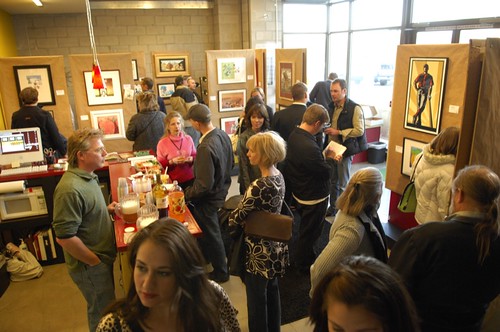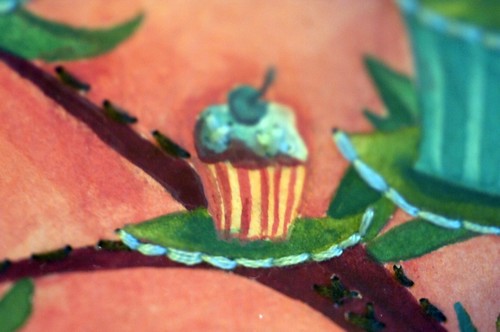 Name: Aaron McKissen
Name: Aaron McKissen
How did you get started in the illustration field?
I’ve always drawn since I was about 6 years old. I made the decision to make it a career when I went to college at Metro State College of Denver and Colorado Christian University.
How did you find your style? Has it changed since you started?
I really have several styles, since I have so many things that interest me, from comic book-style to impressionistic painting. Some of my style was found early on in life, by imitating my favorite artists or cartoonists, like Calvin & Hobbes or Marvel comics.
What is your process when working with clients? Can you run us through a typical job?
I will typically do 3 or so rough thumbnail sketches for the client, then when he or she picks the one they like the best, I will move on to color it, either in paint or on the computer in Photoshop. I will usually have my client sign an illustrator’s contract or invoice before beginning the rough sketches.
How do you market/promote your work?
I am still trying to figure marketing out. I have a plethora of work I’ve done for my portfolio, but marketing doesn’t come easy for me. I have been blessed to have a good friend who does web design, who helped me get my website up, and this has gotten me several illustration jobs. Any other work I’ve gotten has been word of mouth, or through friends & family. I would love to attend a CAI seminar on marketing for the artist or illustrator.
What was one of your favorite assignments?
Creating a series of Manga-style characters for an author in Denver. The book should be out soon, to be self-published by him, and is about customer service in the hospitality industry.
What is the best part about what you do?
I would say seeing an idea come to life - from just ideas in my head, or the client’s, to be fleshed out in reality.
Do you have side projects you work on?
I haven’t had the opportunity to work on a children’s book yet, so I am working on some ideas on the side that I think could be great children’s books.
How do you maintain balance in your life between work and play?
It is difficult, but when I’m working on an illustration project, I will make myself take a walk at some point, or get some exercise.
Do you ever have creative slumps? What do you do then?
When I have a creative slump, I tend to contact the other artists I know, or look at their websites & be inspired by them. I also try to do what Julia Cameron recommends in “The Artist’s Way”, which is to take yourself out on an “Artist Date”, where you see something you haven’t seen before, be it a museum, gallery, craft store, zoo, or anywhere you haven’t been and let yourself be inspired by it.
What has been inspiring you lately?
I sometimes do storyboards for local films, so one of my recent inspirations is all the digital technology & special effects being done for movies these days. I have a lot of catching up to do in computer technology.
Any advice for others who are pursuing creative goals?
I am still relatively new at it myself, but maybe some advice is that in creativity (like other areas of life) it just needs to become a daily habit that you do. Keep at it on a regular schedule and you will find yourself improving your skills.
 Hosted by the Office of Advocacy of the U.S. Small Business Administration on 08/08/2008 in NY
Hosted by the Office of Advocacy of the U.S. Small Business Administration on 08/08/2008 in NY























 She notes that people don’t usually “get that they’re the problem. They don’t recognize themselves.” One of her cartoons shows a person speaking to another and delivering a New Age pickup line, “I like you. You fit my demographic.” When asked what kind of relationships she addresses in her cartoons, Ché says, “I write about all kinds of relationships — romantic, co-worker, boss, parenting — they’re all relationships.” She’s packed a lot of living into her 41 years, having been born the year the song Wild Thing was a No. 1 hit. She studied communications radio, television and film in Illinois and migrated to Colorado more than 20 years ago.
She notes that people don’t usually “get that they’re the problem. They don’t recognize themselves.” One of her cartoons shows a person speaking to another and delivering a New Age pickup line, “I like you. You fit my demographic.” When asked what kind of relationships she addresses in her cartoons, Ché says, “I write about all kinds of relationships — romantic, co-worker, boss, parenting — they’re all relationships.” She’s packed a lot of living into her 41 years, having been born the year the song Wild Thing was a No. 1 hit. She studied communications radio, television and film in Illinois and migrated to Colorado more than 20 years ago. 








